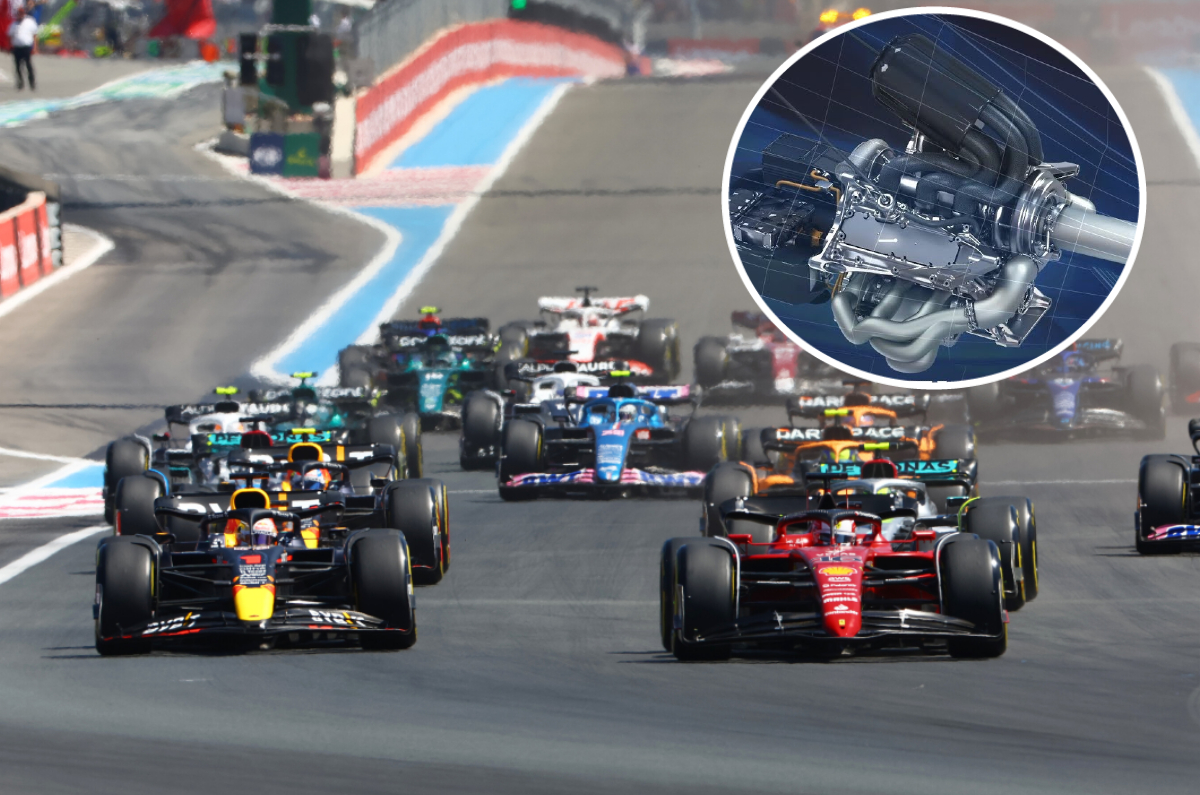
The FIA World Motor Sport Council has approved the new F1 engine regulations that will come into effect in 2026. While the new power units will carry on with the current 1.6-litre V6 internal combustion engine, there are some crucial changes that pave the way for Porsche and Audi to enter F1.
The new rules set out to make F1’s power units more efficient, requiring less fuel, while still putting out over 1,000hp. So what are these changes, and will they have an impact on the on-track racing? We break it down for you:
Goodbye MGU-H, hello Audi and Porsche
From 2026, F1 is doing away with the complex MGU-H (Motor Generator Unit – Heat), which captures energy from exhaust gases. It’s a move intended to encourage new manufacturers like Porsche and Audi to join the fray. The MGU-H has little relevance to road cars and it’s understood that the Volkswagen Group had been reluctant to commit to the expense of developing the system.
The FIA has stated that the new rules “are intended to make it possible and attractive for newcomers to join the sport at a competitive level”. In line with that, the removal of the MGU-H will also reduce any advantages the current power unit manufacturers have.
Earlier this year, former Volkswagen Group chairman Herbert Diess had already announced Audi and Porsche’s plans to enter F1. With the new rules formally approved, both brands can now go ahead with officially confirming their entry.
Porsche will be teaming up with Red Bull for a new engine partnership, and while Audi’s plans aren’t as concrete, it’s expected to tie up with Alfa Romeo.
More electrical power
To make up for the loss of the MGU-H, the MGU-K – which recaptures energy under braking – will generate three times more electrical power. Currently, both MGUs generate 120kW of energy, but this is set to increase to 350kW from just the MGU-K in 2026. So it will be able to collect even more braking energy that would otherwise be wasted.
Despite the reduced fuel flow and resulting lower power, the added electrical energy means the cars will still churn out over 1,000hp. And there’s an extra treat for fans – F1 says the new power units could make the cars louder too.
Less fuel
The new power units will use fully sustainable fuel, generated using non-food biomass or even through carbon capture by drawing CO2 from the atmosphere. This means that no new fossil carbon will be burned, and you can head here to learn more about how this tech could help make internal combustion engines greener.
The combination of the car changes and increased electrical power means the cars will need less fuel to run. F1 is aiming for each car to use just 70kg of fuel during a race from 2026 onwards. This is a major reduction from the 100kg of fuel used by cars in 2020. In 2013, this figure stood at 160kg for a single race. Additionally, the fuel-flow rate will be limited by energy rather than volume.
Return of turbo lag
The MGU-H helped avoid turbo lag, so that could very well return in 2026. It’ll be trickier for drivers to control the car at corner exits, so it would be interesting to see how that plays out.
There’s also the strategy aspect of it all. With the management of higher electric energy, deciding when and how to attack will become even more critical.
Safety
The MGU-K will be enclosed within the chassis, right next to the battery and control electronics. With this, all the high-voltage equipment will now be contained within the safety cell.
Keeping costs in check
A number of measures will be introduced to keep costs in check, including an engine-specific cost cap and banning of expensive manufacturing materials. More engine components will be standardised or supplied from a single source and dyno hours will be limited as well.
But this doesn’t mean innovation will be limited. Engineers will have the freedom to keep developing electrical systems.
Sustainability
From 2026, it will be mandatory for batteries to be recycled, and additionally, materials such as cobalt will be recycled at the end of the MGU-K’s life as well.
Also see:
How F1’s new fuel could keep the internal combustion engine alive
from Autocar Indiahttps://cdni.autocarindia.com/ExtraImages/20220817032928_2026_f1_engine_rules.jpg



